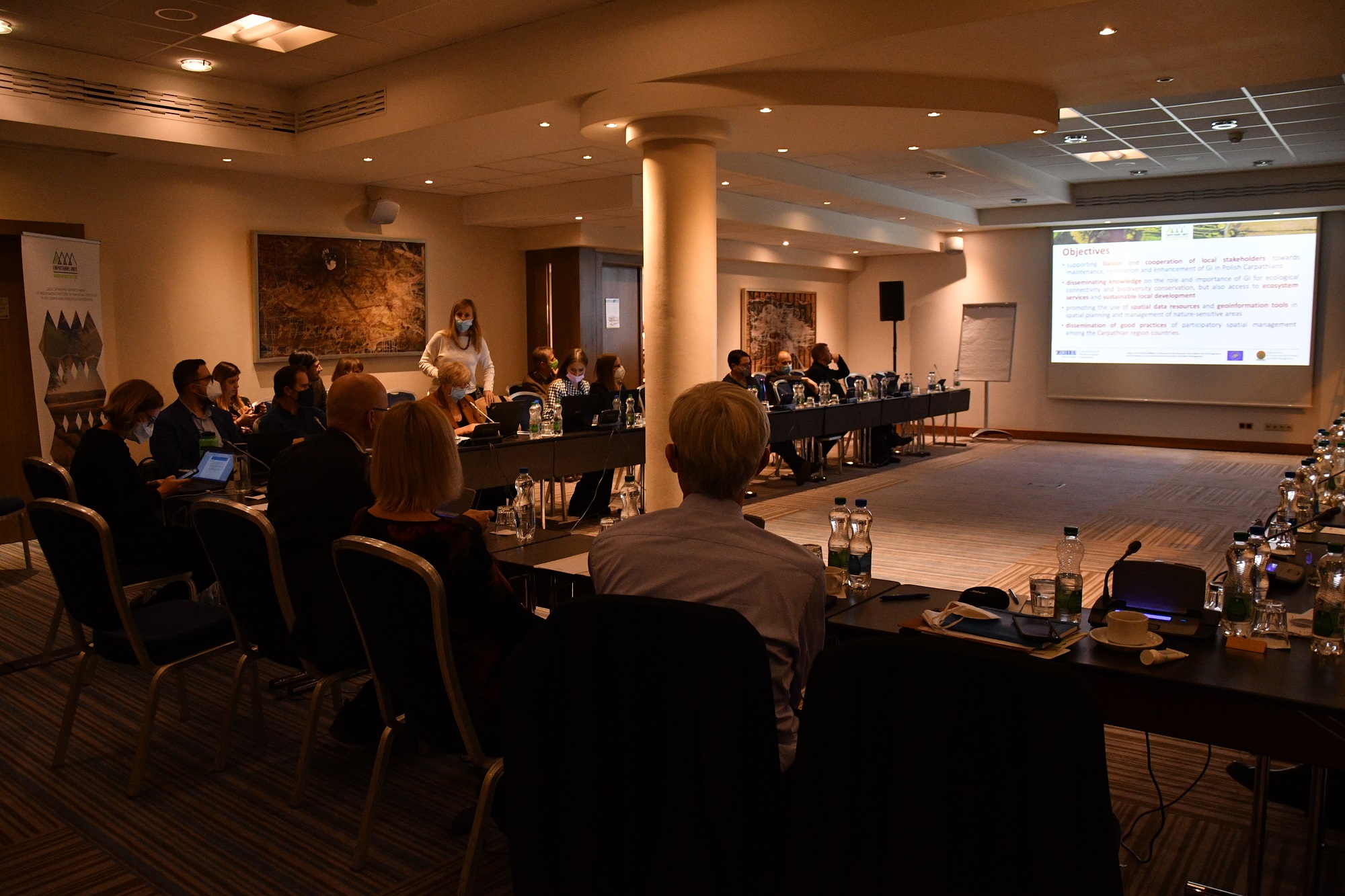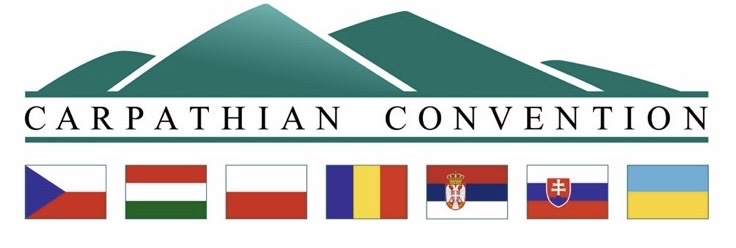SaveGREEN - An important contribution to the implementation of the Carpathian Convention
14-01-2022
Let's start the new year with an important throwback moment for SaveGREEN to the end of the year last year where a high-impact networking event took place. The Carpathian Convention held its 12th Implementation Committee Meeting in Krakow, Poland, to review the status of the implementation of the Convention. From the perspective of SaveGREEN, the meeting served to underline the high value of its close collaborative working relationship with the Carpathian Convention, featuring the outputs of note produced so far and highlighting the current joint activities as well as future opportunities.
 Carpathian Convention meeting in Poland
Carpathian Convention meeting in Poland
Around 50 attendees, some participating online, listened to the overall progress report delivered by the Chairs of the Working Groups on Biodiversity, Sustainable Tourism, Climate Change, and Education on Sustainable Development. Harald Egerer, Head of the Secretariat of the Carpathian Convention, then emphasized the work that is being done in the many past and ongoing projects, which directly contribute to the Convention’s aim of safeguarding Carpathian ecosystems:
SaveGREEN and its ancestor complementary projects TRANSGREEN and ConnectGREEN are supporting the implementation of the Carpathian Convention Protocols on Biodiversity and Sustainable Transport and have generated two notable action plans, the Joint Strategic Action Plan of Sustainable Transport in the Carpathians, developed under TRANSGREEN and the International Action Plan for Conservation of Large Carnivores and Ensuring Ecological Connectivity in the Carpathians, developed under ConnectGREEN. The documents were developed in coordination with the LIFE EuroLargeCarnivores project, WWF-CEE, EURAC, CEEweb and the Carpathian Convention Working Groups. Both were adopted at the 6th Conference of the Parties to the Carpathian Convention in autumn 2020.
Next on the agenda was Eliška Rolfova, Chair of the Working Group of Biodiversity, Ministry of the Environment of the Czech Republic, who presented the finalized work plan 2021-2023, announcing that the next Working Group Meeting will be held in the first half of 2022. She highlighted the Carpathian Convention “as important regional mechanism for the implementation of sustainable development, an example of unique regional collaboration that actively contributes to the Convention on Biological Diversity, the Post-2020 Global Biodiversity Framework and the UN Decade on Ecosystem Restoration, by advocating for mountain biodiversity at different angles, (1) improving policy, and (2) enhancing synergies.” Different currently ongoing projects and possible proposals were mentioned, especially the Report on Monitoring of Large Carnivores in the Carpathians (Klaus Hackländer, University of Applied Soil Science, Vienna, Austria) as a first step for the development of a harmonized wildlife monitoring system across the Carpathians.
Ms. Rolfova then gave the floor to Hildegard Meyer, Project Coordinator of SaveGREEN, who informed the audience about a draft Joint Declaration, currently under preparation, on the topic of ecological connectivity and spatial planning. The Carpathian Convention Secretariat contributed to the initial draft of the declaration, which aims to position the topic of ecological connectivity high up on the agenda of the next EUSDR Annual Forum, hosted under the Ukrainian Presidency in autumn 2022, and also identifies possible follow-up topics/initiatives for further cooperation. Ms. Meyer invited the representatives of the Carpathian Convention to support the document’s further development and to assist in gaining the support of additional international players in the region. The SaveGREEN consortium has identified the EU Strategy on the Danube River Priority Areas and the International Convention on the Protection of the Danube River (ICPDR) as two of the central actors in this regard. Jan Kadlećik, Coordinator of the Carpathian Wetland Initiative and WG Biodiversity member, announced interest to join the initiative behind the Joint Declaration, as did Harald Egerer, Head of the Carpathian Convention Secretariat.
TRANSGREEN, ConnectGREEN and SaveGREEN were also prominently featured in the “Joint session of the Carpathian Convention and the Centrum GRID/Warsaw”, during which Hildegard Meyer presented the results and next steps of the three complementary DTP projects. Three other projects were also presented, “LIFE Green-Go! Local initiatives for deployment of green infrastructure within Natura 2000 sites in the Carpathians”, “Carpathian Unite - Traditional mountain pastoralism as a form of an active protection of endangered species and natural habitats in Carpathians” and “Centralparks”, after which a discussion was launched on possible collaborations under the umbrella of the Carpathian Convention.
The meeting participants found it is important to exchange new project plans to ensure a complementary approach to strengthening regional exchange on science and tools, capacity building including e-learning, cross-sectoral cooperation in order to reduce conflicts of nature conservation and spatial planning and transport infrastructure development. SaveGREEN already includes some notable activities that contribute to these aims, such as the further development of the online platform including a GeoPortal, the capacity building program towards better integration of ecological connectivity into economic project planning and, on the policy level, working on the Joint Declaration on Ecological Connectivity and Spatial Planning.
The meeting continued with a presentation of the development process of the Carpathian Strategy, delivered by Ms. Kinga Stańczuk-Olejnik from the Ministry of the Development Funds and Regional Policy of Poland, and the Strategy’s importance from the macro-regional and the European Committee of the Regions’ perspective. The aim is to create a Carpathian Strategy with goals similar to those of the Danube River Strategy or the Alpine Strategy, as the region is currently split into two from a funding perspective: one program focussing on Central Europe, the other on the Danube River, which hinders the development of projects across the entire Carpathian region.

Carpathian Convention logo
As a final agenda point, Marta Vertiér of the Central European University offered a workshop on strengthening networks within the Carpathian Convention. Among them are the Carpathian Network of Protected Areas, the Science for the Carpathians Initiative, and the Carpathian Wetland Initiative. A new network is being considered on Education for Sustainable Development, for whose development the workshop gave numerous recommendations.
At the closing of the meeting, Harald Egerer, Head of the Carpathian Convention Secretariat, invited the represented NGOs, universities and other observers to contribute to the Convention’s Vision until 2050, currently under elaboration.
The Framework Convention on the Protection and Sustainable Development of the Carpathians (Carpathian Convention) unites seven Carpathian countries located in Eastern and Central Europe (Czech Republic, Hungary, Poland, Romania, Serbia, Slovakia, Ukraine), in a unique partnership, providing a transnational framework for cooperation and multi-sectoral policy integration.
The Convention, which was signed in 2003 and ratified in 2006 by all its 7 Member States, is the only international legal framework covering the entire Carpathian region. In addition, it is the second sub-regional treaty worldwide for the protection and sustainable development of a mountain region, the first being the Alpine Convention.
